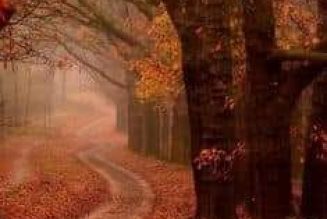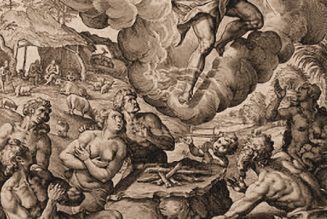The Ooser was written about in Doreen Valiente’s ABC’s of Witchcraft and in Margaret Murray’s The God of the Witches.
It was a hollow mask made of painted wood, trimmed with fur, and crowned with bull’s horns.
The lower jaw of the Ooser was movable, and it possessed a strange convex boss on its forehead.
Valiente claims that this boss was representative of the third eye, a seat of psychic power.
The original Ooser mask disappeared in 1897, though a modern replica, made in 1975 by John Byfleet, is held in the Dorset County Museum, where it is taken out as a part of a procession of Morris dancers atop the Cerne Abbas giant on May Day and St George’s Day, though some records indicate that in the 19th century it was paraded at Christmas instead.
It is unknown when the original mask was made, but appeared to be in a tradition of making animal and grotesque masks to be worn in procession; in the 7th century book Liber Poenitentialis by the then Archbishop of Canterbury, Theodore, he stated:
“whoever at the kalends of January goes about as a stag or bull; that is, making himself into a wild animal and dressing in the skin of a herd animal, and putting on the heads of beast, those who in such wise transform themselves into the appearance of a wild animal, penance for three years because this is devilish”.
The etymology of the word “ooser” is of special interest to we Indiana witches, as we Indiana natives are labeled by the strange moniker “hoosier”, which is a variation of ooser.
The Indiana Historian Jacob Piatt Dunn, Jr. found that the word, “hoosier” was used, in the south, to refer to woodsmen and rough hill people.
Mr Piatt traced this word back to England and the word “hoozer,” meaning anything large in the Cumberland dialect.
This was derived from the Anglo-Saxon “hoo” meaning high or hill.
Mr Pratt suggests that this word was brought from England and applied to people who lived in the southern mountains.
This word then migrated north to the southern hills of Indiana.
“Hoosier” is still sometimes used in the southern United States to characterize someone who is less then sophisticated, or more bluntly, an “ignorant rustic.”
Thus, a hoosier is a Pagan!
















































